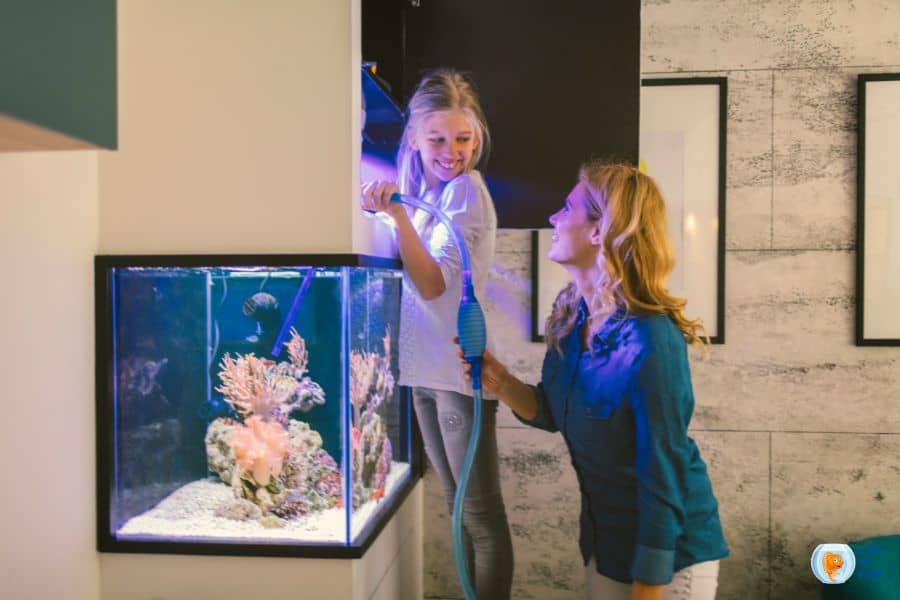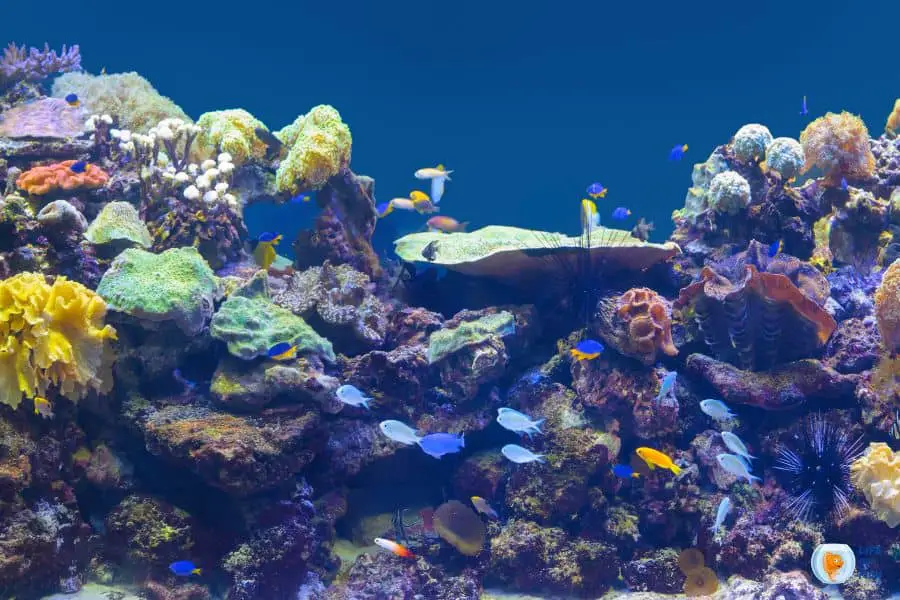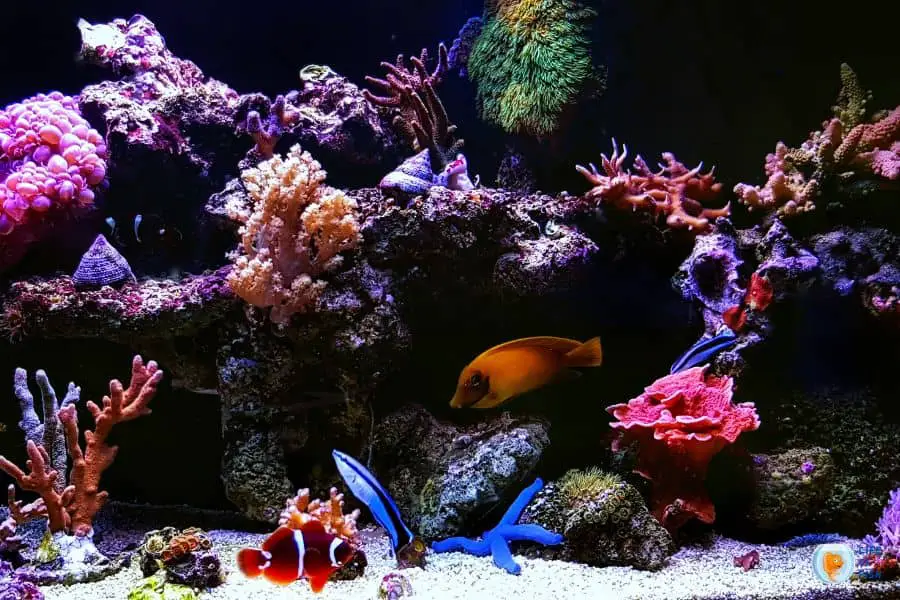Can you use yeast in the reef tank? Let me explain this. Most fish keepers are aware of the fact that yeast is used as a food for infusoria and other microorganisms like micro worms, which are used to feed aquarium fish. But most do not know there are other yeast uses, specifically in a reef tank. This article will explore what yeast is, how it can be used in a reef tank, some of the benefits and drawbacks of using yeast, and finally, a conclusion.

What Is Yeast?
Yeast is a microorganism that is classified as a fungus. There are many different strains of yeast, but the most common one used in a reef tank is Saccharomyces cerevisiae. This particular strain is known for its ability to convert sugars into alcohol and carbon dioxide gas. This makes it a popular choice for brewing beer and making wine.
In the wild, yeast can be found on the surface of fruits and in the guts of animals. It is also found in soil, plant leaves, and water. When yeast is used in a reef tank, it is often in the form of a powder or flakes.
Saccharomyces cerevisiae is often called baker’s yeast, and it is believed to be extracted from the skin of grapes. This yeast is used in many different types of baking, including bread, pizza doughs, and pastries. It is sold in powder form enclosed inside silver paper-lined packets so that the yeast remains dormant for one year.

How Can We Use Yeast In Reef Tank?
There are several ways that yeast can be used in a reef tank.
- Feed The Corals
- Provide CO2
- Eliminate Diatoms
Let’s discuss them one by one in detail.
Feed The Corals
One of the primary ways that yeast can be used in a reef tank is to feed the corals. Yeast is a protein-rich food source that corals can use to grow and maintain their tissue. In the wild, corals get a majority of their protein from zooplankton that they filter out of the water column. Zooplankton is tiny animals that drift through the water column. They are a key part of the marine food chain and are an important food source for many different types of animals, including corals.
While it is possible to purchase zooplankton and feed it to your corals, this can be expensive and time-consuming. Another option is to culture your own zooplankton, which can also be difficult and require special equipment. A third option is to feed your corals yeast. Yeast is a good source of protein and other nutrients that corals need to grow. It is also relatively easy to culture and does not require special equipment.
According to a study, yeast, along with a few other protein-rich foods, can accelerate the growth rate of coral. The same study suggests feeding your coral from 6 am to 12 pm for optimum results. To culture yeast, you simply need a food-grade container, some water, and a lid. Most aquarists recommend using the tank water for this purpose, as it already contains the necessary nutrients.
To culture yeast, mix one cup of water with one teaspoon of yeast. This will create a yeast starter culture. Once the yeast starter culture is created, it can be used to feed the corals. To feed the corals, simply add a small amount of the yeast culture to the water. The corals will filter the yeast out of the water and consume it.

Provide CO2
Yeast can also be used to provide carbon dioxide (CO2) in a reef tank. When yeast ferments, it emits carbon dioxide gas. Some marine aquarists use carbon dioxide gas to dissolve carbonate materials into the aquarium water better, enhancing the bio-availability of calcium, magnesium, and other minerals for growing corals.
While it is possible to purchase carbon dioxide gas and use it to dissolve carbonate materials, this can be expensive. A cheaper option is to use yeast to produce carbon dioxide. To do this, you will need a food-grade container, some water, sugar, and yeast. Mix one cup of tank water with one tablespoon of sugar and one teaspoon of yeast. This will create a yeast starter culture.
Once the yeast starter culture is created, it can be used to produce carbon dioxide gas. Simply add a small amount of the yeast culture to the water. The yeast will consume the sugar and produce carbon dioxide gas. One problem with yeast is that it makes alcohol as a by-product, which kills the yeast and also changes the water chemistry, specifically the ph level. To resolve this problem, you can add Sodium Bicarbonate into the culture to neutralize the alcohol, and the yeast will produce CO2 for a long time.

Eliminate Diatoms
Diatoms are a type of algae that can form a brown film on the glass of an aquarium. They are typically seen as a problem and can be difficult to remove if established in an aquarium. Diatoms are often introduced into an aquarium on live rock or live sand. Once they are established in an aquarium, they can reproduce rapidly and spread throughout the tank, causing an aquarium to become cloudy. They can also block out light and prevent photosynthesis from occurring.
Diatoms can be difficult to remove once they are established in an aquarium. Some aquarists use chemical treatments, but these can be harmful to the other inhabitants of an aquarium. A better option is to use yeast to eliminate diatoms. No one knows how yeast eliminates diatoms, but many aquarists successfully used yeast to get rid of diatoms. Yeast reacts in some way with diatoms, causing the Diatom to stop growing and die.
However, it won’t work within a day or two. Those who have tried and tested recommend treating the tank for at least five days to see good results. Further, they recommend using Fleischmann’s RapidRise Yeast for better results.
To use yeast to eliminate diatoms, you will have to add 1/4 teaspoon of yeast to 400 gallons of water for about five days every other day. Change the dose according to the volume of your aquarium. You need to be patient in order to see results, as it takes time for the yeast to work its magic. Only one treatment won’t show you any results.

Conclusion
Yeast is a protein-rich fungus that can produce Carbon Dioxide and alcohol when it ferments. It can also work mysteriously with other chemicals in the aquarium to provide benefits such as enhanced bio-availability of calcium and other minerals or the elimination of diatoms.
While it might not be the most glamorous job, yeast can play an important role in a reef tank. It can be used in a reef tank to provide food for the corals, eliminate diatoms, and provide carbon dioxide. Be sure to use only food-grade yeast and don’t overdo it, or you might end up with a mess on your hands.
Related question
Can I add baking soda to the reef tank?
Yes, you can add baking soda to the reef tank as it can adjust alkalinity and pH levels. When adding baking soda to the reef tank, be sure to monitor the levels closely, as too much change can be fatal to the inhabitants of your aquarium.
How often should corals be fed?
You should feed most corals at least once a week, but some corals may need to be fed more frequently. It is best to research the specific needs of the coral before adding it to your aquarium.
Read Next : Ph Gh And Kh Guide For Fish Keepers
